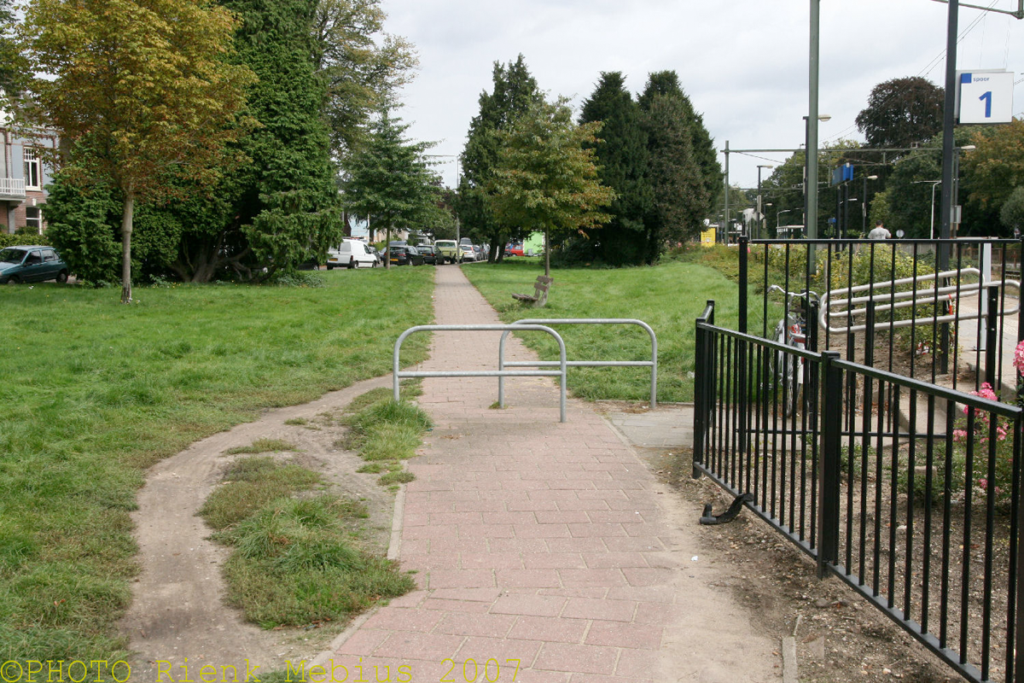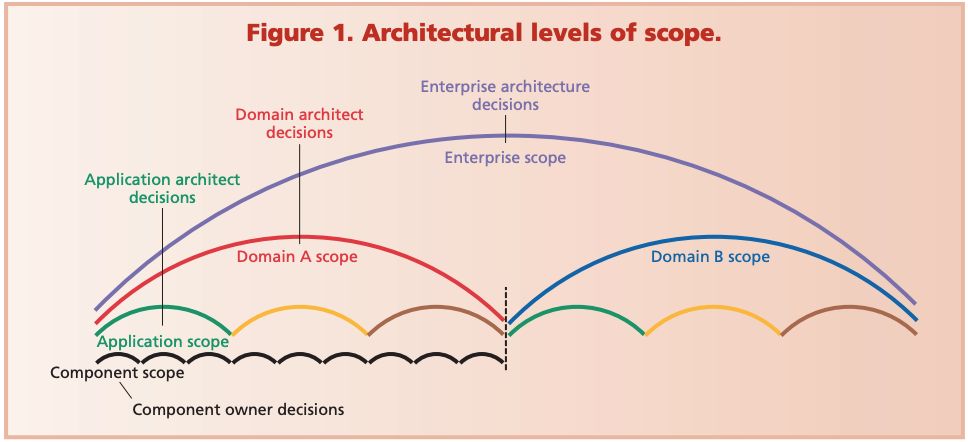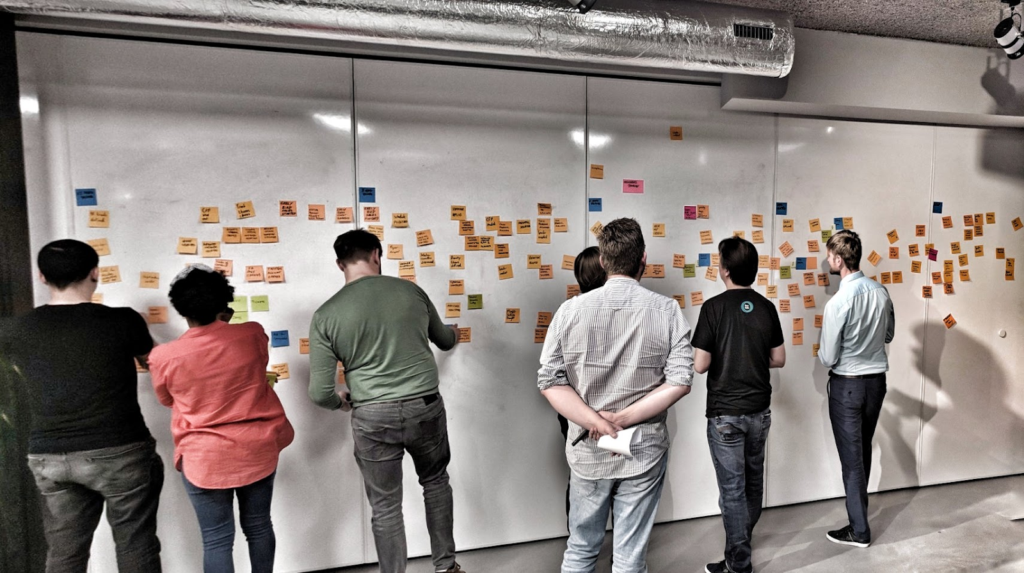
How the role of architects is changing in agile and DevOps
The considerable debate in the industry is whether we still require architects when we can make the high-performing software teams responsible for the architecture. That is an ideal situation that is very hard to bring to reality, and irrespective of how you organize yourself, you still need to practice architecture outside the development teams. In this post, we will describe why:- Software teams have different levels of work, focusing on their purpose within the system. They focus less on and are not incentivized to think about a higher level of work.
- Software teams are parts of your organization's system design; we still need to ensure they fit and align with your business strategy and value streams.
- All those parts should be made responsible for their own architecture decisions; It is the responsibility of the architects to facilitate it and that requires architects to learn new social capabilities, which are hard to upskill by training itself and involves coaching.

Questions about whether design is necessary or affordable are quite beside the point: design is inevitable. The alternative to good design is bad design, not no design at all. — Douglas MartinAlong came the DevOps transformation focusing on merging Development and Operations practices so that the teams could take full responsibility for what they built. And as a bonus, it also brought in the architecture capabilities, which helped move the teams in the right direction. And it also removed much responsibility from the architects to the teams. Like what we observed in an agile transformation, architects are left out, which does not mean we do not need them.
We still require architects
Software teams are moving towards autonomous high-performing teams, owning the products or services they build for and getting closer to their customers or stakeholders. In addition, by continuously improving their team practices and capabilities, they get to know the business value they are delivering better—an excellent thing. And because of this, we see fewer and fewer “IT architects” in organizations. Something Edo Poll already wrote about in his article 'The value of Agile Architecture in a modern organization'. And organizations also need to take care that these high-performing autonomous teams stay aligned to the business strategy. We observe two major approaches:- Organizations are implementing an agile scaling framework focused on implementing bureaucratic processes to manage the coupling between the teams to keep them aligned, lowering the team's autonomy.
- Or the teams get full autonomy and focus entirely on their own goal but do not know their impact on the organization's business value stream.
 So different levels of scope require other skills and a different way of thinking. That concept of architecture scopes also aligns with the work of Elliott Jaques about levels of work. Jaques makes a great analogy in that different levels of work have as different a nature in terms of modes of thinking as, by analogy, water is different to steam. Similar to how application scope is different from domain scope. Each requires other aspects and has other properties.
So different levels of scope require other skills and a different way of thinking. That concept of architecture scopes also aligns with the work of Elliott Jaques about levels of work. Jaques makes a great analogy in that different levels of work have as different a nature in terms of modes of thinking as, by analogy, water is different to steam. Similar to how application scope is different from domain scope. Each requires other aspects and has other properties.
Different levels of work have as different a nature in terms of modes of thinking as, by analogy, water is different to steam – Elliott JaquesArchitects should still be dealing with all the different levels of scope as they did pre-agile, to quote Gregor Hope, ‘ride the architecture elevator.’ The difference in agile Architecture is that architects now need to take the lead in new opportunities and then continuously shift the responsibilities to teams and managers. We can do this through participatory design. We collaboratively model the solutions with stakeholders, users, and teams. However, this requires a new set of capabilities of an architect. These capabilities are more focused on the social domain than the technical.
Start coaching your architects
Instead of getting rid of your architects during the transformation, train your architects. Teach architects how to make collaborative architecture decision-making and do collaborative modeling workshops. Teach them how to facilitate these workshops between domain experts, stakeholders, and software engineering teams—designing a shared sense of reality with a shared language and understanding. Facilitating these sessions requires architects to invest in people and group skills, like holding space, dealing with resistance, seeing the power of ranking, dealing with cognitive biases, creating buy-in, and managing conflicts. And learning all these new things takes practice and, most of all, coaching. Coaching is vital because everyone will be insecure when dealing with group challenges for the first time. And understandably so, because we are entering a new domain of capabilities. Technical problems are relatively simple to solve, given enough time and knowledge. Dealing with social issues is a lot harder because they are complex. They require experience and reflection to solve. Every situation is different, and most problems architects are dealing with involve a person's inner emotional issues. For instance, if someone doesn’t feel welcome in a group, that is a challenge that someone needs to be aware of during these sessions. Is it just that person’s feeling in particular? they are dealing with? Or are they really not welcome in that session? No wonder architects then fall back on what they already know, making decisions in isolation and then getting stereotyped as ivory tower architects. When this happens, we get consultants in to solve the problem. Their job is to facilitate these sessions and consult the organization into transforming and shifting the responsibilities and changing the team topologies by leading collaborative modeling sessions. And sometimes they help the architect upskilling. But as soon as they leave and do the job, the underlying issues with the current architects are not solved. Of course, part of consultants' job is coaching architects during their engagement; however, it is never the prime focus. That is why we find it essential to make coaching architects more explicit in such a transformation. First, upskill architects via training and then define individual goals and growth paths to close gaps in skills and experience by applying the learned knowledge in practice. Next, let architects start co-facilitating these sessions to help them reflect on what they found hard and what issues they faced. Then coach them to facilitate sessions to face these issues and solve these for themselves.
When this happens, we get consultants in to solve the problem. Their job is to facilitate these sessions and consult the organization into transforming and shifting the responsibilities and changing the team topologies by leading collaborative modeling sessions. And sometimes they help the architect upskilling. But as soon as they leave and do the job, the underlying issues with the current architects are not solved. Of course, part of consultants' job is coaching architects during their engagement; however, it is never the prime focus. That is why we find it essential to make coaching architects more explicit in such a transformation. First, upskill architects via training and then define individual goals and growth paths to close gaps in skills and experience by applying the learned knowledge in practice. Next, let architects start co-facilitating these sessions to help them reflect on what they found hard and what issues they faced. Then coach them to facilitate sessions to face these issues and solve these for themselves.Written by

Kenny Baas-Schwegler
A lot of knowledge is lost when designing and building software — lost because of hand-overs in a telephone game, confusing communication by not having a shared language, discussing complexity without visualisation and by not leveraging the full potential and wisdom of the diversity of the people. That lost knowledge while creating software impacts the sustainability, quality and value of the software product. Kenny Baas-Schwegler is a strategic software delivery consultant and software architect with a focus on socio-technical systems. He blends IT approaches like Domain-Driven Design and Continuous Delivery and facilitates change with Deep Democracy by using visual and collaborative modelling practices like Eventstorming, Wardley mapping, context mapping and many more. Kenny empowers and collaboratively enables organisations, teams and groups of people in designing, architecting and building sustainable quality software products. One of Kenny's core principles is sharing knowledge. He does that by writing a blog on his website baasie.com and helping curate the Leanpub book visual collaboration tool. Besides writing, he also shares experience in the Domain-Driven Design community as an organiser of Virtual Domain-Driven Design (virtualddd.com) and Domain Driven Design Nederland. He enjoys being a public speaker by giving talks and hands-on workshops at conferences and meetups.
Our Ideas
Explore More Blogs
Contact



